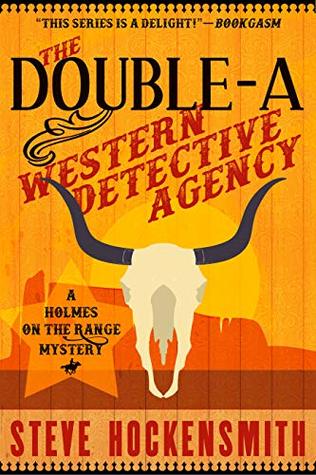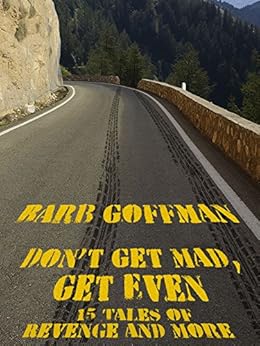Two weeks ago, Travis posted his spreadsheet method for keeping track of his writing and his submissions. I can see how his method works for him.
My system developed gradually as I saw the need to record certain information, therefore it became a conglomeration of Word documents. But then, authors go about their writing differently, so maybe authors keep their writing records differently. In any case, here's a brief look at my system.
Naturally, I have a Bibliography document. This allows me to at least consider myself as a semi-successful, short-fiction author on the commercial side of writing and serves to collect some handy-to-have statistics. And yes, there are some duplicate entries from one document to another.
BIBLIOGRAPHY
R.T. Lawton
(as of 01/17/2020)
11/1976 1 "Dead End Alley" Easyriders Magazine ($250) [aka Pockets/ R.E. Silverman]
NOTE: DEA agents weren't allowed 2nd occupations, thus the double alias.
05/1977 2 "...to ashes,...to dust" Easyriders magazine ($225) [aka Pockets/ R.E. Silverman]
10/1984 3 "Jeffrey" Time Out & Recess [aka Arthur Twillinger/R.T.]
12/1984 4 "Peer Pressure" Time Out & Recess [aka Arthur Twillinger/R.T.]
NOTE: Yes, I did write 22 children's stories for two different state-wide elementary school newspapers at the same time as writing three biker stories, but I had to be careful writing on two different levels simultaneously because there are some words bikers don't understand.
NOTE: Yes, I did write 22 children's stories for two different state-wide elementary school newspapers at the same time as writing three biker stories, but I had to be careful writing on two different levels simultaneously because there are some words bikers don't understand.
* * * skip to end of document * * *
09/14/19 9 Holiday Burglars, KDP Paperback (all stories previously published in AHMM
09/22/19 31 Mini-Mysteries, KDP Paperback (31 mini's, plus 1 previously unpublished "And the
Band Played On" as a bonus story.
11/01/19 137 "A Loaf of Bread" #7 PU 40 AHMM ($370)
12/01/19 138 "The Job Interview" Mystery Weekly ($35.86 minus $1.88 fee)
Bought, but not yet scheduled: "Reckoning with your Host" #6 SA 41 AHMM ($360) + "A Matter of Values" 42 AHMM ($430) + "A Helping Hand" #8 PU 43 AHMM ($410) + "The Road to Hana" 44 AHMM ($340) + "Gnawing at the Cat's Tail" #7 SA 45 AHMM ($340)
a total of 143 published short stories
(and below this line is a list we'll skip of published writings in other categories, such as cowboy poems, articles, etc., plus a compilation of short story statistics.)
Some of the number codes above are easy to figure out, some aren't. For instance, "A Loaf of Bread" is the 137th published short story, the 7th in my Paris Underworld series and the 40th story bought by Alfred Hitchcock Mystery Magazine.
The next document is my SUBMISSION LOG kept in 4 year increments. It keeps track of when and where a story was submitted, what happened to it, when the contract and check came and when the story got published. This document lets me know how long some processes take and if something is overdue. Here are some samples of entries:
10/01/19 "The Job Interview" Mystery Weekly
10/02/19 e-mail acceptance, signed e-contract
10/03/19 payment via PayPal
12/01/19 published
11/12/19 "The Release Factor" #8 SA AHMM # 903457
01/17/19 "The 14K Assassin" #9 SA AHMM # 994625
Any time there is a blank space between the lines above, that means there is pending action and my eyes are quickly drawn there.
Lastly, there is an UNSOLD STORY TRACKER where I can tell at a glance which stories are still in inventory and who rejected them. Here's a short example:
WAS: "Taking Down the Room" AHMM, EQMM
WAS: "Slipping into Darkness" (long version) MWA anthology
WAS: "Down in Jersey" Deadly Ink
SOLD: "Slipping into Darkness" 750 word flash sold to Flash Bang Magazine
WAS: "Mom's Day" AHMM
NOW: "Mum's Day" Weekly News
"The Queen" Blue Cubicle Press (casino issue)
If an anthology or other call for submissions comes out with a short deadline, I can refer to the above document and instantly know if a story languishing in inventory has the right ingredients for their writer's guidelines.
Those three record-keeping documents are the main ones I'm concerned with. However, I do have a tendency to make lists and also keep various writing statistics. For instance, a list I'll skip showing here is my AHMM stories sold, how much was paid for each one (with a running total) and the word count in each story (with a running total). I only made this list up in order to use the stats as a means to argue my point of view in a blog article I wrote a couple of years ago about short stories vs. novels.
So, there it is. I'm open to any and all ideas. It may not be a glamorous side to writing, but how do you keep your writing records?
























